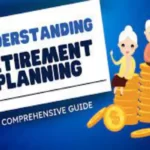Understanding Life Estates: Roles & Rights Explained
Navigating the world of real estate can often feel like deciphering a complex puzzle, especially when terms like “life estate” come into play. I’ve always been fascinated by how different ownership interests can affect the use and transfer of property, and life estates are a prime example of this complexity.
A life estate is a unique form of property ownership that grants someone the right to use and possess a property for the duration of their life. It’s a concept that might sound straightforward at first, but there’s more to it than meets the eye. From creating life estates to understanding the roles of remaindermen, this topic is ripe with intriguing details.
What is a Life Estate?
When we delve into the world of real estate, the term “life estate” often pops up, but it’s not as straightforward as some might think. Essentially, a life estate is a form of property ownership. This unique legal arrangement grants an individual, known as the life tenant or life estate owner, the right to use and dwell in a property for the duration of their life. However, it’s the subtleties and implications of this setup that truly capture my interest.
The foundation of a life estate rests on two primary roles: the life estate owner and the remainderman. While the life estate owner enjoys the right to use the property, they’re also bound by the duty to maintain it. On the flip side, the remainderman holds an ownership interest in the real property but must wait patiently, as their rights to possess or use the property lie dormant until the life estate terminates.
Creating a life estate can occur in various ways, such as through a will, by the purchase of a life estate interest in someone else’s property, or through the operation of probate law. One compelling example involves a situation following the death of a property owner. If the deceased’s will grants a life estate to a surviving spouse, while naming another individual as the remainderman, the dynamics of property rights and use become deeply intertwined with familial and legal considerations.
Moreover, life estates are not permanent fixtures. They terminate upon the death of the life estate owner or another specified person, but can also end based on conditional limitations set within the life estate document itself. These conditions might include scenarios where the life estate owner vacates the property for an extended period.
Understanding life estates unravels a fascinating layer of real estate law, highlighting how property rights can be allocated and enjoyed in distinctly timed phases.
How Does a Life Estate Work?
When it comes to understanding how a life estate functions, it’s crucial to grasp the key roles involved: the life tenant and the remainderman. I’ve navigated through numerous estate planning strategies, and life estates stand out for their simplicity yet profound impact on property ownership and transfer.
At its core, a life estate splits property ownership between two parties over different periods. The life tenant has the right to use and occupy the property for as long as they live. This means I could reside in, rent out, and enjoy the property during my lifetime, with certain responsibilities like maintenance and paying taxes falling squarely on my shoulders.
Meanwhile, the remainderman, who is often an heir or chosen beneficiary, holds a future interest in the property. They’re like silent partners waiting in the wings, as their ownership doesn’t activate until the life tenant’s death. It’s a seamless transition that bypasses the often cumbersome probate process, directly transferring property ownership. This automatic transfer is a major plus, offering peace of mind to everyone involved.
To illustrate, let’s consider Alice and her daughter Carol from the previous context. Alice, the life tenant, enjoys full use of her home despite the furnace issue. Carol, the remainderman, knows the property will be hers one day without the need for a will or probate court intervention. Yet until Alice’s passing, Carol has no say over the property, demonstrating the clear delineation of rights and responsibilities within a life estate.
Life estates require careful documentation, notably the life estate deed, which must be recorded in the relevant county recorder’s office. This legal step is non-negotiable for ensuring the arrangement’s validity and effectiveness in property transfer post-life tenant’s death.
In essence, life estates embody a balanced approach to managing and transferring property, offering a blend of immediate benefits and future assurances. Whether it’s simplifying estate planning or securing a loved one’s living situation, understanding the workings of a life estate can significantly influence one’s estate planning decisions.
Creating a Life Estate
Creating a life estate can sound complex, but it’s more straightforward than one might think. I’ve learned through my experiences that the first step towards establishing a life estate involves clearly documenting the intention to create such an arrangement. Whether through a deed, will, or trust document, it’s crucial to articulate that a life estate is the goal. No specific legal jargon is required, just a clear indication of intent. For me, consulting with an experienced Texas trust attorney was invaluable in navigating the nuances of this process.
The next step ensures that two or more persons are involved – the life tenant and the remainderman. As someone who’s navigated these waters, I can’t stress enough how important it is to understand each party’s role. The life tenant—the person granted the right to use the property for their lifetime—must be clearly designated, as well as the remainderman, who will ultimately inherit the property. These roles distinguish a life estate from other property arrangements and ensure that the transfer of ownership is seamless upon the life tenant’s passing.
One aspect of life estates that intrigued me is how life interest is calculated, especially when there are multiple owners. It dawned on me that life estate interest varies not just with the number of life tenants but significantly with their ages. This variability impacts the value of the life estate and, by extension, responsibilities like taxes and healthcare costs. It’s a fascinating layer of complexity that underscores the necessity of meticulously planning and documenting a life estate.
Through my journey, I’ve discovered that creating a life estate doesn’t just involve legal formalities. It requires a deep understanding of what each party wants to achieve with the estate, an acknowledgment of the responsibilities that come with it, and a strategic plan for its eventual transfer.
Rights and Responsibilities of Life Tenants
Navigating the complexities of a life estate, I’ve realized the importance of understanding the specific rights and responsibilities that fall to me as a life tenant. It’s more than just residing in the property; it encompasses a range of legal and moral duties that are essential for maintaining the estate’s value and ensuring a smooth transition to the remainderman after my time.
Firstly, I have the right to use and occupy the property for my lifetime. This right is foundational to the life estate concept, granting me a sense of security and permanence. However, with rights come responsibilities. I must uphold the property’s condition, addressing maintenance and repairs as needed. Neglecting these duties can lead to a decrease in property value, which isn’t fair to the remainderman who will eventually inherit the property.
Another pivotal aspect is property taxes and insurance. As a life tenant, it’s my duty to ensure these are paid promptly. Falling behind on property taxes can lead to legal troubles, potentially jeopardizing the estate. Similarly, keeping up with insurance premiums is paramount; in case of damage or loss, the property needs to be protected to safeguard both my interests and those of the remainderman.
Moreover, I’ve learned that any improvements or alterations to the property require careful consideration. While I’m encouraged to maintain the property’s value, significant changes often need the consent of the remainderman. This collaborative approach ensures that both parties’ interests are considered, paving the way for decisions that benefit the estate’s long-term value.
In essence, the life tenant role is characterized by a balance of enjoying immediate rights to the property while meticulously fulfilling obligations that protect the property’s future. It’s a unique arrangement that underscores the importance of foresight and cooperation in property management.
The Role of Remainderman
In the world of real estate, understanding the distinct roles within a life estate is critical. My focus here is on the remainderman—a role many might find complex but is crucial within the framework of a life estate. As a remainderman, I hold a unique position, one where my ownership interest becomes fully realized after the life tenant’s death. This might sound straightforward, but it involves a delicate balance of rights and responsibilities that both protect and limit my actions concerning the property.
Firstly, it’s essential to understand that as a remainderman, I can sell my interest in the property. However, the buyer steps into my shoes, waiting until the life tenant’s demise to gain full title. This aspect often shapes how the property transaction unfolds, particularly the sale price, hinging on the life tenant’s age and estimated longevity. If the life tenant is elderly, I stand to make a larger profit from the sale due to the perceived shorter wait time for the property’s full control.
The dynamics can shift when both the life tenant and I, as the remainderman, agree to sell the property outright before the life tenant’s passing. The split of proceeds from such a sale is directly influenced by the life tenant’s age, highlighting the need for cooperation and mutual agreement in managing the property effectively.
| Life Tenant’s Age | Remainderman’s Share of Sale Proceeds (%) |
|---|---|
| Under 60 | Less than 50% |
| 60 to 70 | Approximately 50% |
| Over 70 | More than 50% |
Beyond the realm of sales, my role encompasses not assuming responsibility for the property’s taxes or insurance premiums until after the life tenant’s death. This might seem like a relief, but it’s a double-edged sword. On one hand, it frees me from financial burdens tied to the property during the life tenant’s lifetime. On the other, it places a significant responsibility on my shoulders post the life tenant’s passing. Thus, I must prepare for these eventual costs, ensuring I fully understand and comply with local zoning ordinances and building codes, much like the life tenant during their tenure.
Being a remainderman is about navigating these complexities, balancing patience with proactive planning for the future.
Conclusion
Understanding the intricacies of a life estate is crucial for anyone involved in real estate transactions. As we’ve seen, the role of the remainderman comes with its unique set of challenges and responsibilities. It’s a balancing act between patience and proactive planning. To navigate this terrain successfully, one must be well-informed about the implications of their position as either a life tenant or a remainderman. Armed with this knowledge, you’re better equipped to make informed decisions that align with your long-term real estate goals. Remember, every detail matters when it comes to property ownership and estate planning.







